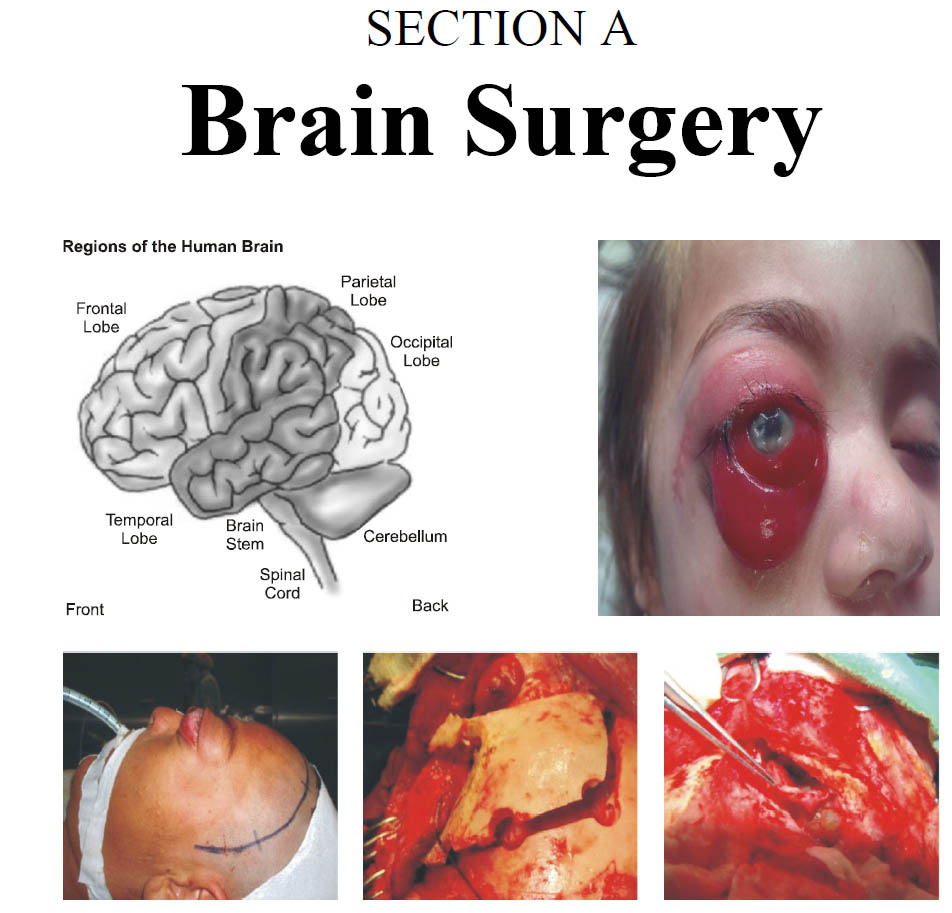The association of brain tumor and hydrocephalus in the patient managed with craniotomy and ventriculoperitoneal shunt – The single-centre study
DOI:
https://doi.org/10.36552/pjns.v25i1.402Keywords:
KEYWORDS: Craniotomy, ventriculoperitoneal shunt, brain tumor, hydrocephalus.Abstract
OBJECTIVE: To determine frequency of hydrocephalus in brain tumor perioperative and and need of perment VP shunt .
METHOD & MATERIAL: This was descriptive study, the ethical approval was taken from the hospital, study duration from 24-June-2014 to 30-september-2020 at JPMC, Karachi. Inclusion criteria were patient with brain tumor associated with hydrocephalus or postoperatively developed hydrocephalus within 3months of surgery and exclusion criteria were they had shunted previously due to some other reason, history of operation of brain tumor previously, history of trauma.
RESULTS: We operated 156 cases of brain tumor concomitant with hydrocephalus, these included pre-operative and post-surgery development of hydrocephalus, out of that 65 (41.6%) were adult and 91 (58.33%) were children, who had hydrocephalus due to brain tumor. 90 (57.6%) were male and 66(42.3%) were female. The mean age for an adult was 34.2±8years and 8.1±4years was for a pediatric population of the patient. Patients who had preoperative hydrocephalus were 34 (21.7%) adults and 55(35.25%) pediatric and post-operative development of hydrocephalus was 28 (17.9%) in adults and 41 (26.28%) pediatric patients,
CONCLUSION: The common brain tumor associate with hydrocephalus in children was craniopharyngioma and in adults it was CP angle tumor. Among 6026 cases of brain surgeries 2.6% required vp shunt dependency. Considering common cause of hydrocephalus in brain tumors, perioperative decision-making plays a pivotal role in the management of tumour-associated hydrocephalus.
References
1. Keles GE, Chang EF, Lamborn KR, Tihan T, Chang CJ, Chang SM, Berger MS. Volumetric extent of resection and residual contrast enhancement on initial surgery as predictors of outcome in adult patients with hemispheric anaplastic astrocytoma. Journal of neurosurgery. 2006 Jul 1;105(1):34-40.
2. Malm J, Kristensen B, Stegmayr B, Fagerlund M, Koskinen LO. Three-year survival and functional outcome of patients with idiopathic adult hydrocephalus syndrome. Neurology. 2000 Aug 22;55(4):576-8.
3. Rekate HL. The definition and classification of hydrocephalus: a personal recommendation to stimulate debate. Cerebrospinal fluid research. 2008 Dec;5(1):1-7.
4. Lassen B, Helseth E, Egge A, Due-Tønnessen BJ, Rønning P, Meling TR. Surgical mortality and selected complications in 273 consecutive craniotomies for intracranial tumors in pediatric patients. Neurosurgery. 2012 Apr 1;70(4):936-43.
5. Castro BA, Imber BS, Chen R, McDermott MW, Aghi MK. Ventriculoperitoneal shunting for glioblastoma: risk factors, indications, and efficacy. Neurosurgery. 2017 Mar 1;80(3):421-30.
6. Riva-Cambrin J, Detsky AS, Lamberti-Pasculli M, Sargent MA, Armstrong D, Moineddin R, Cochrane DD, Drake JM. Predicting postresection hydrocephalus in pediatric patients with posterior fossa tumors. Journal of Neurosurgery: Pediatrics. 2009 May 1;3(5):378-85.
7. Margules A, Jallo J. Complications of decompressive craniectomy. JHN Journal. 2010;5(1):4.
8. Stiver SI. Complications of decompressive craniectomy for traumatic brain injury. Neurosurgical focus. 2009 Jun 1;26(6):E7.
9. Ghritlaharey RK, Budhwani KS, Shrivastava DK, Srivastava J. Ventriculoperitoneal shunt complications needing shunt revision in children: A review of 5 years of experience with 48 revisions. African Journal of Paediatric Surgery. 2012 Jan 1;9(1).
10. Wu Y, Green NL, Wrensch MR, Zhao S, Gupta N. Ventriculoperitoneal shunt complications in California: 1990 to 2000. Neurosurgery. 2007 Sep 1;61(3):557-63.
11. Goldschmidt E, Hem S, Ajler P, Ielpi M, Loresi M, Giunta D, Carrizo A, Yampolsky C, Argibay P: A new model for dura mater healing: Human dural fibroblast culture. Neurol Res 35:300-307, 2013
12. Paff M, Alexandru-Abrams D, Muhonen M, Loudon W. Ventriculoperitoneal shunt complications: A review. Interdisciplinary Neurosurgery. 2018 Sep 1;13:66-70.
13. Fan-Havard P, Nahata MC. Treatment and prevention of infections of cerebrospinal fluid shunts. Clinical pharmacy. 1987 Nov;6(11):866.
14. Enger P, Svendsen F, Wester K. CSF shunt infections in children: experiences from a population-based study. Acta neurochirurgica. 2003 Apr 1;145(4):243-8.
15. Korinek AM, Golmard JL, Elcheick A, Bismuth R, Van Effenterre R, Coriat P, Puybasset L. Risk factors for neurosurgical site infections after craniotomy: a critical reappraisal of antibiotic prophylaxis on 4578 patients. British journal of neurosurgery. 2005 Apr 1;19(2):155-62.
16. Benzagmout M, Boujraf S, Góngora-Rivera F, Bresson D, Van-Effenterre R. Neurosarcoidosis which manifested as acute hydrocephalus: diagnosis and treatment. Internal Medicine. 2007;46(18):1601-4.
17. Hosainey SA, Lassen B, Hald JK, Helseth E, Meling TR. Risk factors for new-onset shunt-dependency after craniotomies for intracranial tumors in adult patients. Neurosurgical Review. 2018 Apr 1;41(2):465-72.
18. John JK, Robin AM, Pabaney AH, Rammo RA, Schultz LR, Sadry NS, Lee IY. Complications of ventricular entry during craniotomy for brain tumor resection. Journal of neurosurgery. 2017 Aug 1;127(2):426-32.
19. Hosainey SA, Lassen B, Hald JK, Helseth E, Meling TR. Risk factors for new-onset shunt-dependency after craniotomies for intracranial tumors in adult patients. Neurosurgical Review. 2018 Apr 1;41(2):465-72.
20. Riva-Cambrin J, Detsky AS, Lamberti-Pasculli M, Sargent MA, Armstrong D, Moineddin R, Cochrane DD, Drake JM. Predicting postresection hydrocephalus in pediatric patients with posterior fossa tumors. Journal of Neurosurgery: Pediatrics. 2009 May 1;3(5):378-85.
21. Roth J, Constantini S, Blumenthal DT, Ram Z. The value of ventriculo-peritoneal shunting in patients with glioblastoma multiforme and ventriculomegaly. Acta neurochirurgica. 2008 Jan 1;150(1):41-7.
22. Hosainey SA, Lassen B, Hald JK, Helseth E, Meling TR. Risk factors for new-onset shunt-dependency after craniotomies for intracranial tumors in adult patients. Neurosurgical Review. 2018 Apr 1;41(2):465-72.

Downloads
Published
Issue
Section
License
The work published by PJNS is licensed under a Creative Commons Attribution-NonCommercial 4.0 International (CC BY-NC 4.0). Copyrights on any open access article published by Pakistan Journal of Neurological Surgery are retained by the author(s).












